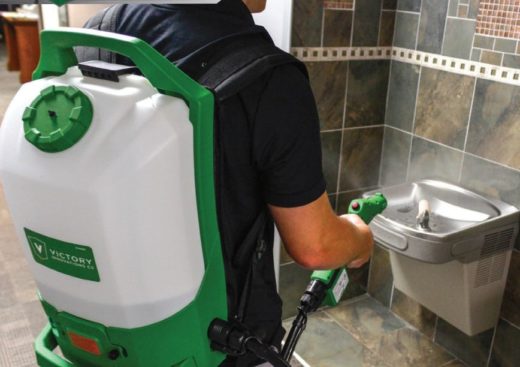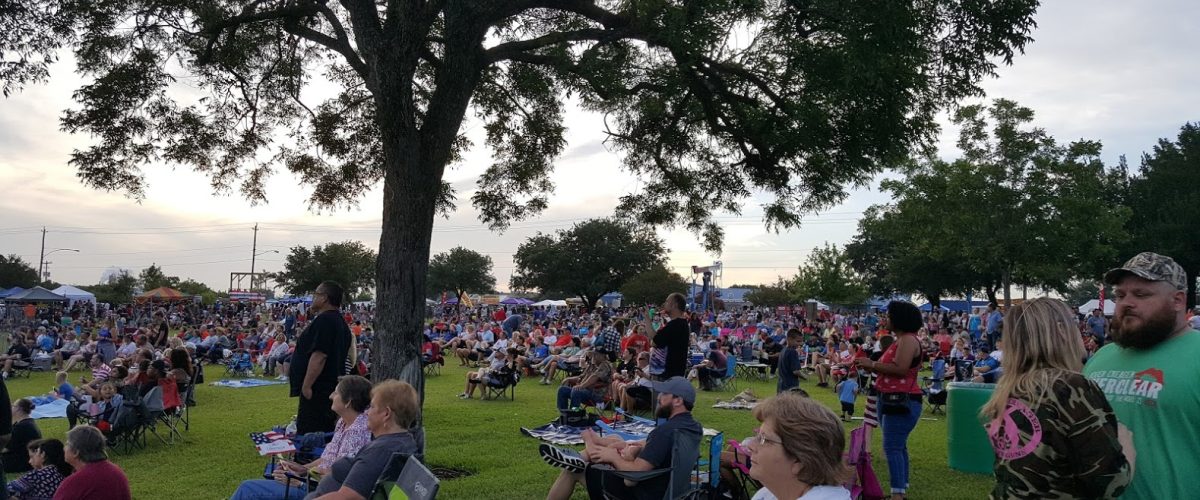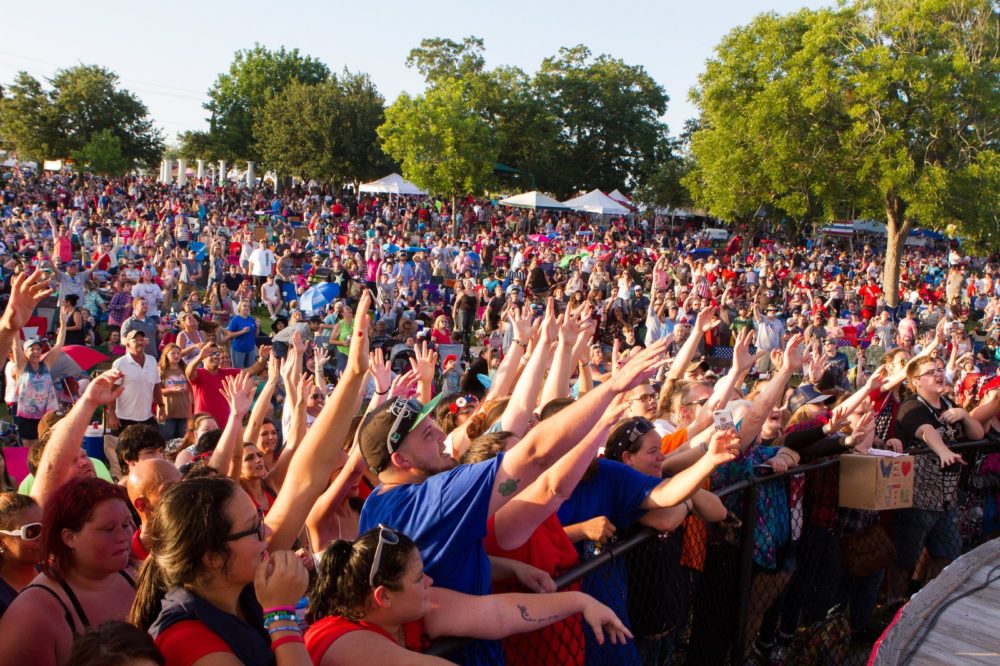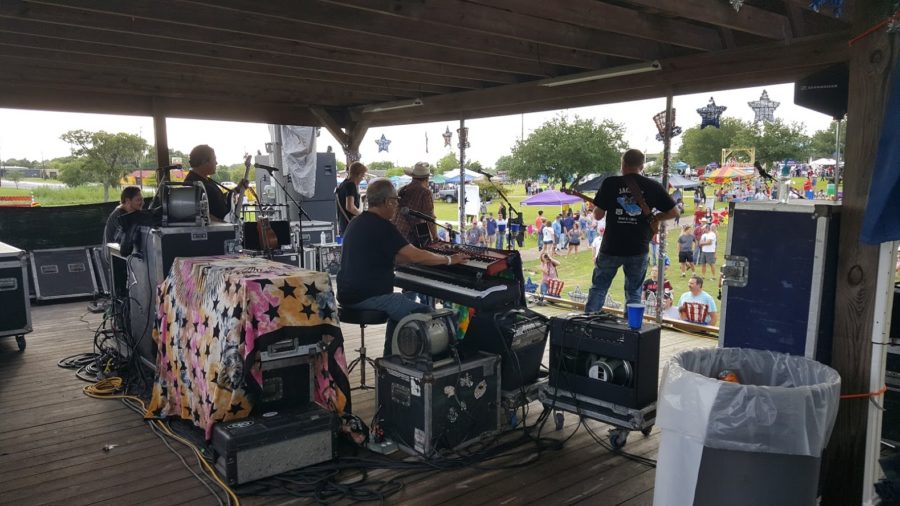TSE Entertainment seeks to help its clients with many facets of festival and concert production. As part of that effort, TSE has vetted sponsorship sales resources to help those involved in festival production find sponsor for their events. We also have been vetting sanitizing agents and equipment for our clients’ events. We see ourselves as more than an entertainment booking agency or festival production company. We are an extension of the clients we serve. We are part of their team. In that role we make these Festival Production Pandemic Plan suggestions available.
Prologue: The following Scenarios and festival production pandemic plan suggestions are the result of a specific request by a Parks & Recreation Department to TSE as part of the planning process for a 2020 Festival. TSE is responsible for entertainment booking and festival production for the event in question. It includes several different scenarios and recommendations for each of them. The scenarios include:
- Producing a festival knowing that the Coronavirus is still circulating and for the need to adhere to sanitizing and other best practices for the prevention of the spread of the viruses.
- Producing a Festival with Social Distancing and perhaps some limits on capacity in place.
Given the nature of the pandemic, Scenario 1 would be the baseline approach to any event held in 2020. TSE recommends that any Festival Pandemic Plan Guidelines be included with other emergency plans for active shooter, terrorist attack, severe weather, etc.
The Festival Production Pandemic Plan Guidelines and recommendations are based on a number of different documents available from The Event Safety Alliance, CDC, Festival & Fair Trade Associations and Public Health authorities in Texas.
The recommendations also take into consideration the views of potential attendees as expressed in a number of surveys on the subject. They are an attempt to hold the event as safely as possible. These recommendations will address:
- Patrons
- Volunteers and Workers
- Vendors
- Performers
At the time of this post, no one yet knows about a second wave, the extent of new cases, treatments, testing availability, and the level of resistance to the wearing of masks and social distancing. At this moment we do see a large resistance to social distancing and the wearing of masks. Such resistance may be somewhat mitigated by science and what transpires over the next several months as the country reopens.
We recommend that one person with proper background be designated at the Infection Mitigation Coordinator to coordinate with, communicate and help implement public health guideline. That person should be responsible to making sure that the festival production pandemic plan is in compliance with the latest public health guidance and that the festival pandemic plan safety guidelines are fully implemented prior and during the event.
Scenario One: No public health restrictions but using best practices to prevent the spread of the Coronavirus and other viruses during festival production planning
Patrons:
Education Prior to Event: It’s important that all messaging about the event should address the following:
- What rules are in place for the event and that they are meant for their protection. These new health procedures and expectations should be added to the other rules for the venue and the event, e.g., list of prohibited items and behaviors, etc. so patrons know what is expected.
- What is being done by the event to protect those who attend from virus spread. These will focus on sanitary practices above and beyond what one would typically see at an event.
- Communicating what the experience is going to be and is that it’s going to be something that is of interest as an experience beyond the safety concerns.”
You also have the option of stating in all messaging that those attending do so at their own risk and that the City and Event Staff take no liability for any infections that might occur as a result of attending the event.
This may discourage attendance and is really not necessary because it is all but impossible for anyone to prove that they became infected at the event. If the steps taken in this document to mitigate the risk of illness and how you arrived at them are documented, then festival producers will not breach their duty to provide a reasonably healthy and safe environment under these challenging circumstances.
This pre-event messaging should be everywhere information is posted about the event, both online an offline including:
- Associated websites
- Social media channels
- Online advertising
- Creating an email and or text distribution list of those interested and keeping them informed via these channels about the events and the steps being taken to protect them.
- Offline advertising: including print, radio and cablecasting
Event Education:
- Signage leading to and at the event:
- Reminder signage should be in place where patrons are likely to be standing still on moving slowly, e.g., Kids area (more about this), vendor areas, beer/wine tent areas meet and greet area and in front of stage.
- Volunteers walking among patrons:
- People with a helpful attitude, friendly face modeling good behavior who can encourage good behaviors without irritating patrons. If sanitizer samples are available, passing out such samples is a way to connect with patrons in the process.
- Stage announcements:
- The Emcee and performers can remind patrons to practice good behaviors as well periodically from the main stage.
 Strategies to Protect Patrons During Festival Production Planning:
Strategies to Protect Patrons During Festival Production Planning:
It’s about cleaning and disinfecting. Cleaning using soap and water or cleaning solution removes dirt and impurities from surfaces and objects. After a surface has been cleaned it should then be disinfected. Both are essential. High touch area should be disinfected using materials effective against the Coronavirus. We recommend Electrostatic cleaning (spraying a fine mist) for, for backline and stage equipment, toilet sanitation, and all other non-food surfaces that are potential high touch areas.
NOTE: The frequency of disinfection depends on the type of disinfectant used. Alcohol and bleached based (short-term) sanitizers need to be applied frequently. These disinfectants kill viruses and bacteria but provide not lasting mitigation so the area can be quickly infected again. There are a class of disinfectants that last for long periods of time. Some of them have mitigation properties for up to 30 days although they should still be applied at enough frequency to give patrons peace of mind that they are safe. Such disinfectants can be four or five times as expensive as alcohol and bleach so they can be applied less frequently if cost is a major issue. Because of their residual mitigation properties, this type of disinfectant is used in settings when risk of infection is higher because of the nature of the facility or event. When couple with electrostatic disinfection, they provide the best mitigation against bacteria and viruses, including the Coronavirus.
What Is Electrostatic Disinfection?

For awkwardly shaped objects or hard to reach places, cleaning staff only have to point and spray; the nature of the mist allows it to coat surfaces evenly, and envelope objects—even if the mist is only sprayed from one side. After the spray is applied, the sanitizing agent works to disinfect the covered surfaces. For this reason, electrostatic spray is an excellent solution for germ and contaminant ridden areas.
The following steps can also be taken to mitigate the potential risk to those involved with the event. There may be repetition of many steps as we address the other audiences for this document.
Patrons:
- No tables in beer tent and vendor areas to eliminate congregation of people and to provide more room for appropriate distancing.
- No side walls on tents to allow maximum air flow. Perhaps smaller tent: 20 X 80 to increase air circulation and minimize people seeking it for weather-related or social reasons.
- Allowing ingress and egress to the concert area from any area and not trying to restrict such ingress or egress
- Sanitizing all kids area equipment and game items if possible with long-lasting disinfectant using an electrostatic sprayer. *
- Use Porta Potties or single stall trailers for latrines. Perhaps a disinfection sticker is posted on the outside to help reassure those using them.* While multi-stall trailers are easier to clean that is mitigated by the crowding that would occur in such trailers. You also should consider increasing the spacing between Porta Potties to allow for social distancing for those waiting in line.
- Provide hand sanitizer stations near all bathrooms, vendors and areas where people may congregate. Consider solar-powered hand washing stations if possible
- Clean all high-touch surfaces continually and let patrons see that in progress to help reassure them, including tables and chairs, ATMs, door handles, push plates, sink faucets, counters, lids, soap dispensers, towel dispensers, etc.*
- No massing in front of stage allowed. May require barricades or other means to prevent crowding.
- All trash cans lid free, so they don’t need to be touched to throw something away. Same for recycle bins.
- Shuttle buses should be disinfected after every trip. *
- Encourage those that attend to sanitize their hands frequently, wear masks and practice safe behaviors such as social distancing.
Vendors:
Food and beverage sellers and merchandise sellers should have a plan for cleaning and other risk mitigation measures for the event. Their plan should include:
- Workers should place food and beverages on the counter or other surfaces rather than handing purchases directly to patrons.
- Workers should wear masks.
- Vendors should be encouraged to use “cashless” payment options and use a non-food server to handle credits cards, etc. if necessary. Touch points should be sanitized after each use.
- Workers who handle money should not serve food or beverages. They should also wear gloves when handling money
- Patrons should hold their own identification for inspection for their age.
- Condiments should only be available in single use packets or containers that can be sanitized after each use. Single use packets should be served with food orders or provided at patron’s request.
- Utensils should be prewrapped cutlery, straws and stirrers unless individual utensil dispensers are utilized.
- Eliminate and tables and chairs at the site for people to congregate and consume their food or beverages.
- High touch items related to food and beverage service should be frequently sanitized.
- Patrons waiting for service should be reminded to appropriately distanced.
- No trying on merchandise and all sales are final.
Workers and Volunteers
People working the event should always try to:
- Stay home if experiencing symptoms
- Maintain social distancing when possible
- Wash their hands frequently (once an hour or more). Workers may use sanitizer containing at least 60% ethanol or 70% isopropanol when sinks are not available.
- Wear gloves when handling any items on which infection can be transmitted. They should also be worn when using cleaning or disinfecting products as well.
- Wear a mask when within 6 feet of each other.
- Follow all directions of the products and machines used for cleaning and disinfecting. Use the proper called for face mask when using an electrostatic disinfecting machine.
- Avoid touching their face
- Cover coughs or sneezes with a tissue or their elbow followed by thorough hand washing.
Performer Issues:
The following should be coordinated with the performers’ management or tour manager as to what is needed to mitigate risk to performers, patrons and workers.
- When possible they should practice social distancing. All patrons should be kept at least 10 feet from those performing because they expel more aerosols and further than those not singing or performing.
- All production equipment and cargo should be sanitized when unloaded. Workers should wear gloves and face covering while handling the equipment.
- High touch equipment such as motor controllers, microphones, mic stands, audio cables, etc. should be sanitized frequently.* When feasible individual users should be dedicated to particular equipment.
- Ground transportation drivers should be screened for temperature or infection symptoms.
- Social distancing should be practiced in vans or buses.
- Passengers should use face coverings and gloves while riding. They should use hand sanitizer after leaving the vehicle.
- Disinfect the passenger compartment after every trip. Electrostatic machine is recommended.*
- People taking part in “Meet & Greet” should wear masks except for the few seconds the photo is actually taken
- Consider doing temperature checks for anyone taking part in “Meet & Greet.”
*Frequency of disinfecting surfaces depends on whether a long-lasting sanitizer is used as opposed to alcohol or bleach disinfectants. Alcohol and bleach disinfectants kill bacteria and viruses but leave no residual protection from reinfection of bacterial or viruses. They must be used frequently.
Scenario Two Additions to Festival Pandemic Plan:
If the pandemic is still a major health threat and the local health department or state has advised caution or capacity limits, then the following actions should be undertaken. These are in addition to the actions listed previously in this document. They include:
Additional Measures:
- Forced social distancing through such means as markings on the grass for groups to sit distant from each other.
- Absolutely no congregating in front of stages.
- Provide for six feet of distancing between Porta Potties to allow for social distancing of those waiting in line to use them.
- Temperature checks for kids’ zone
- Unless longer term sanitizing is available, it may be necessary to eliminate Kids’ zone and games when the same items are touched by many children.
- Health surveys and temperature checks for all vendors, workers, performers and volunteers.
- Requiring face coverings for patrons, vendors and workers.
- Eliminating the “Meet & Greet” portion of the performance.
Financial Implications of Implementing Festival Pandemic Plan:
The financial implications of adding these measures are related to labor and sanitizing supplies. The lack of power to many areas may be an issue for these measures and could impact cost or ability to implement them.
Electrostatic sanitizing machines can be rented from various cleaning supply rental agencies. Demand is very strong now so reserving well in advance is recommended. Cordless backpack sanitizing machines can be purchased for under $2,000 although delivery may take a while since many are on back order.
Sanitizing Solutions for the machines can be approximately $30 -$35/gallon for bleach or alcohol-based sanitizers. These sanitizers are effective for killing the virus but reinfection can start to occur the next time the surface is exposed to the virus. Frequent use is required to keep potential high exposure surfaces from becoming sources of infection for patrons.
Longer term sanitizers would be in the order of five times the cost of bleach or alcohol products but provide for a much longer mitigation time period. The longer lasting products will mitigate reinfection of surfaces for the entire period of a festival up to 30 days in many cases. The labor costs saved and efficacy of preventing infections and the associated peace of mind of patrons make them a great solution for those involved in festival production services.
Other added expenses include
- No touch thermometers
- Barricades
- Sanitizing/hand washing stations
Vendors would have some added expenses as a result of the recommendations in this document. The expenses involved are not onerous for vendors but may required them to change some of their business practices.
Those involved in festival production have a duty to provide a reasonably healthy and safe environment for patrons, volunteers, workers, vendors and performers. Everyone involved with live entertainment is trying to provide a safe setting under these challenging circumstances.
TSE believes that these suggested guidelines can do just that for all your stakeholders.
Related Posts:
25 Years of Festival Entertainment Booking for Independence Day






